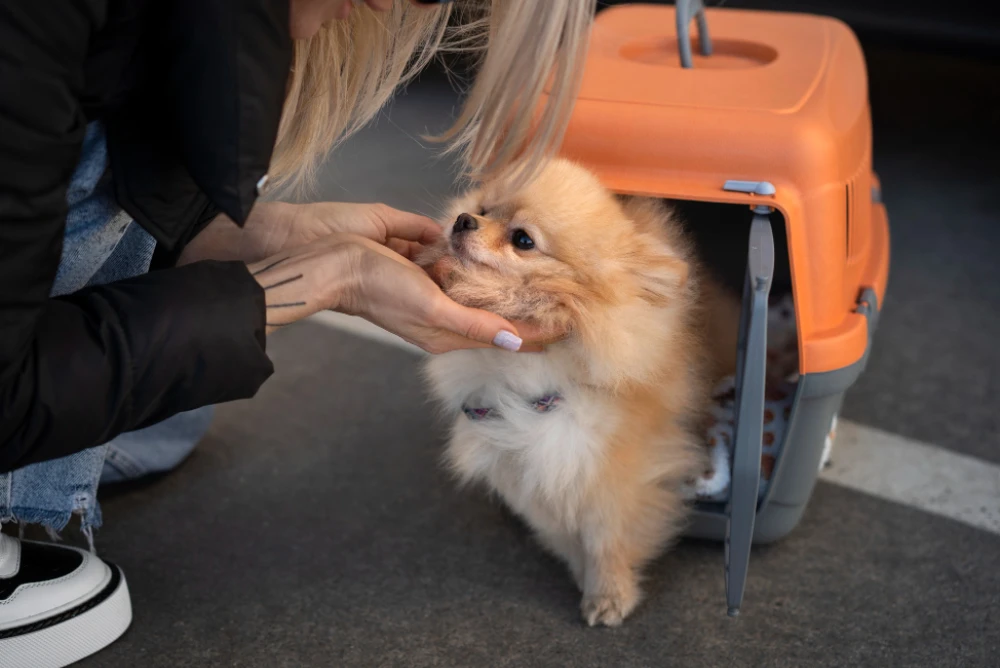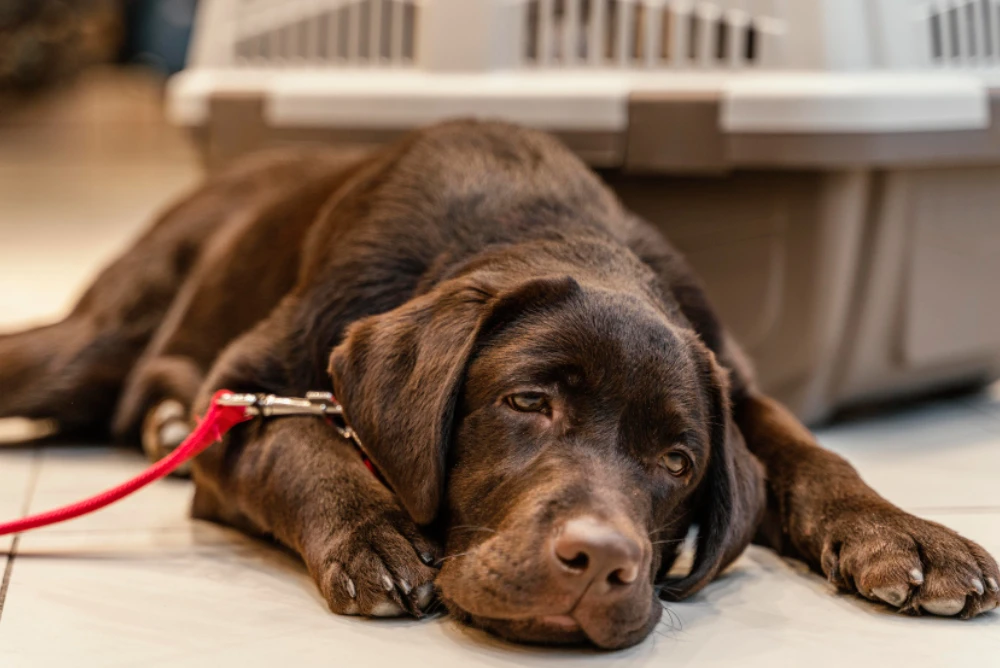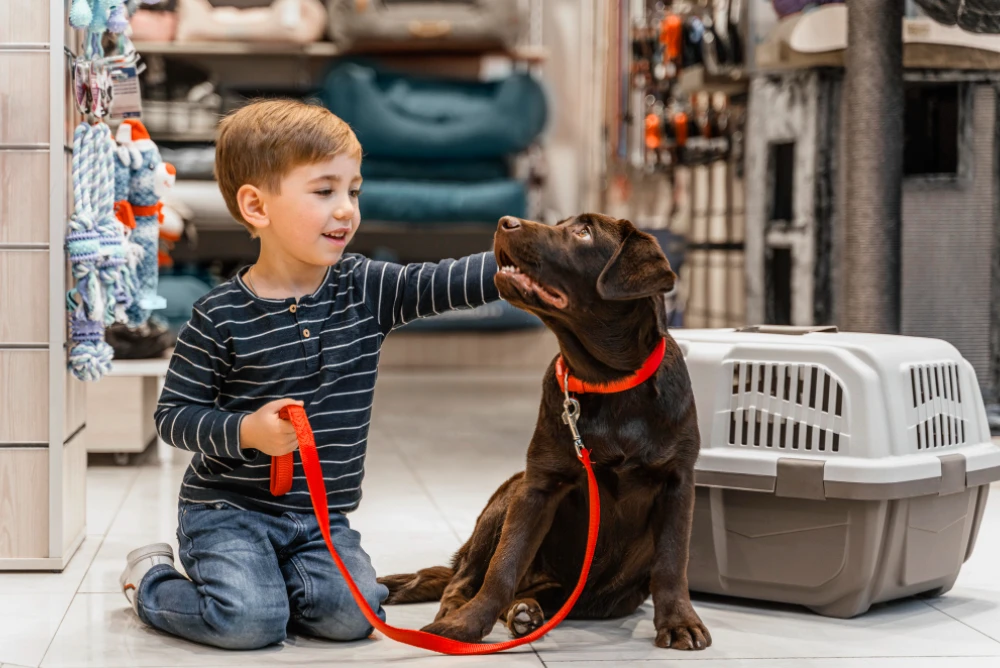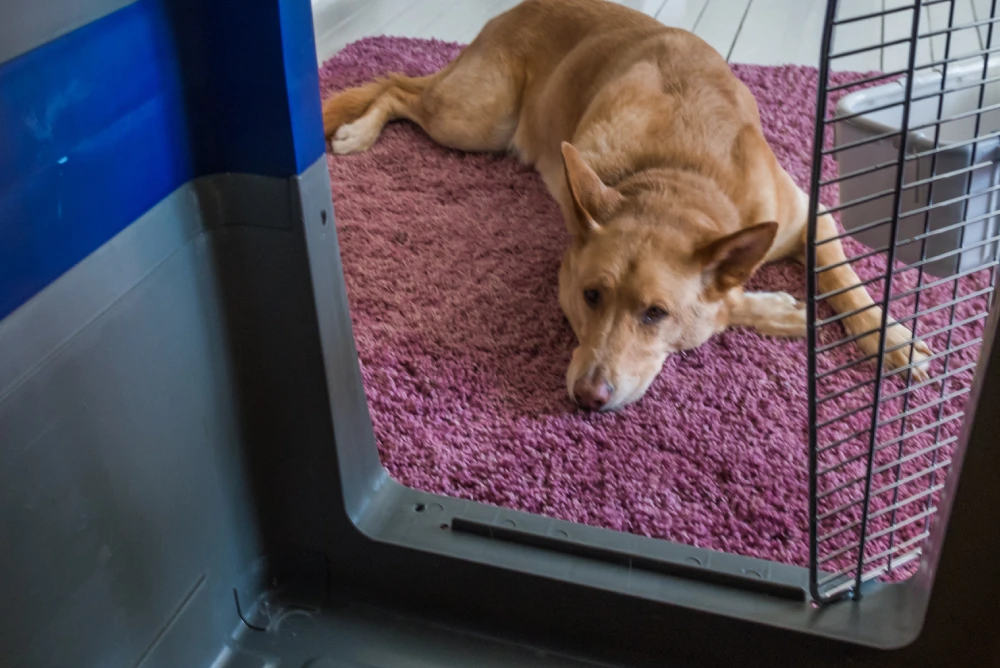Crate training can be one of the most life-changing decisions you make for your dog and yourself. Whether you have brought home a lively puppy or opened your heart to a rescue dog, learning how to crate train a dog helps create a safe, comforting space your pet can call their own.
A thoughtfully introduced crate provides security, aids in house training, reduces separation anxiety, and makes travel less stressful. For rescue dogs, crate training can be especially transformative, helping them feel safe and establish trust in their new home.
In this guide, you will discover crate training basics, special tips for rescue dogs, and answers to the most common questions.
Why Crate Training Is Important
Before you dive into crate training tips for beginners, it is important to understand why crate training is recommended by veterinarians, trainers, and rescue organizations alike:
Potty Training Success
Dogs naturally avoid soiling their sleeping area. A crate supports predictable bathroom habits and speeds up house training.
A Safe, Calming Space
A crate becomes a dog’s personal den, a secure place to relax during stressful times like thunderstorms, fireworks, or visitors.
Easier Travel and Vet Visits
When dogs are used to spending time in a crate, traveling or staying at the vet becomes far less frightening.
Separation Anxiety Support
Dogs prone to anxiety often find comfort in an enclosed space where they feel protected.
Common Misconception: Crate training is not about locking your dog away or using confinement as punishment. When done properly, it is about creating a positive, cozy retreat that your dog associates with safety and rest.

Choosing the Right Crate
Selecting the best crate for your dog makes the training process smoother and more enjoyable:
Size Matters
Your crate should be large enough for your dog to:
- Stand up comfortably
- Turn around
- Lie down fully stretched
Tip: For puppies, use a crate with dividers so you can adjust the size as they grow.
Crate Types
- Wire crates: Durable and ventilated. Great for visibility and airflow.
- Plastic crates: Cozy and secure. Often preferred for travel or dogs who prefer a more enclosed feel.
- Soft-sided crates: Lightweight and portable, but better for calm dogs.
Special Considerations for Rescue Dogs
If you are learning how to crate train a rescue dog, keep in mind that many rescues have trauma histories. A plastic or covered crate can help them feel safer by reducing visual triggers.
How to Make It Inviting:
- Place a soft bed or crate mat inside.
- Add a favorite toy or an item with your scent.
- Keep water available if the dog will be crated for longer periods.
How to Crate Train a Dog Step by Step
Here is a structured approach that works for dogs of all ages:
1. Introduce the Crate Gradually
Leave the crate door open and let your dog explore at their own pace. Toss treats inside to encourage them to step in. Never rush this stage, building positive associations early is essential.
2. Use Positive Reinforcement
Whenever your dog enters or settles in the crate, reward them with:
- Treats
- Praise (“Good crate!”)
- Gentle petting
This is called positive reinforcement crate training, and it is the most effective, humane approach.
3. Establish a Crate Training Schedule
Consistency is key. Create a daily routine that includes:
- Short crate sessions after meals or walks
- Rest periods in the crate
- Longer overnight stays
How long to crate train a dog?
Most dogs adjust within 2–4 weeks with daily practice.
4. Troubleshoot Common Issues
Whining: Wait for a brief pause before opening the door so they don’t learn that whining gets attention.
Refusal to Enter: Start over with treats and slow introductions. Never force them inside.


How to Crate Train a Rescue Dog
Rescue dogs often need extra patience. Many have negative associations with confinement or have never seen a crate before.
Why Rescue Dogs May Have Crate Anxiety
- Past neglect or trauma
- Fear of being abandoned again
- Lack of previous training
Extra Steps to Build Trust
- Keep the crate in a calm, quiet area of your home.
- Use high-value treats or a stuffed Kong to entice them inside.
- Never close the door the first few times—they need to feel free to leave.
- Sit nearby while they explore the crate to provide reassurance.
Creating Positive Associations
Feed meals in the crate. Toss treats randomly inside when your dog is not looking. Over time, they will begin to see the crate as a safe haven.
Handling Setbacks
Regression is normal. If your rescue dog refuses to enter or shows fear, take a step back. Training should never be forced. Be compassionate and flexible, trust takes time.
Common Mistakes to Avoid
Even well-meaning dog parents can make these errors:
Forcing the Dog Inside
Never shove or drag your dog into the crate. This creates fear and distrust.
Using the Crate as Punishment
Your dog should never associate the crate with anger or scolding.
Leaving the Dog Crated Too Long
Puppies should not be crated more than a few hours during the day. Adult dogs should not spend more than 6–8 hours at a stretch.
Ignoring Stress Signals
Signs like heavy panting, drooling, or frantic scratching mean your dog is in distress. Always respond with patience and understanding.
How long does it take to crate train a dog?
Most dogs adjust in 2–4 weeks. Rescue dogs may need longer.
Can you crate train an adult rescue dog?
Absolutely. With patience, positive reinforcement, and compassion, adult dogs can learn to love their crate.
What if my dog has separation anxiety?
Start very slowly. Pair the crate with calming aids and consult a trainer if anxiety persists.
Conclusion
Learning how to crate train a dog especially a rescue dog can be one of the most rewarding and meaningful investments you make in your dog’s long-term well-being. When approached with patience, consistency, and love, crate training builds deep trust, supports successful house training, reduces anxiety, and provides your dog with a safe, secure retreat they can always rely on.
Citation
9 tips for crate training a rescue dog | Diamond Pet Foods. (n.d.). Diamond Pet Foods. https://www.diamondpet.com/blog/behavior/training/9-tips-for-training-a-rescue-dog/
Canine Pet Rescue (CPR): Crate-Training your Dog. (n.d.). https://www.caninepetrescue.com/about-gsds/crate-training-your-dog/
Miller, D. (2025, January 7). Training a rescue dog: patience, love, and treats. K9 Connoisseur. https://k9connoisseur.com/blogs/news/training-a-rescue-dog?srsltid=AfmBOoqJ4f6nIZaiMY34cORCKMvHM8Urpr3wNtTpX0r-MGI8y-IFvpIN

